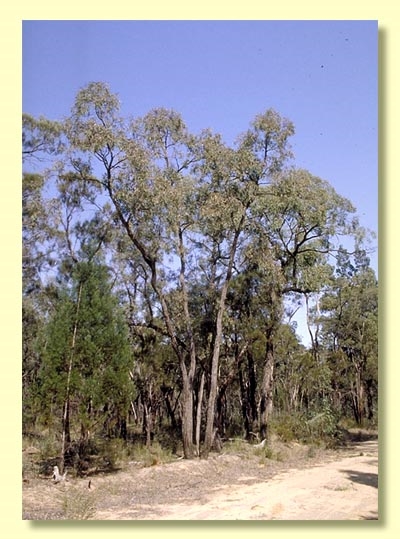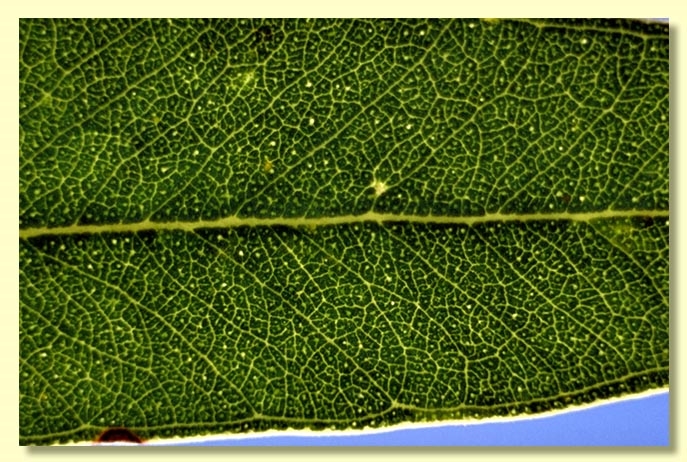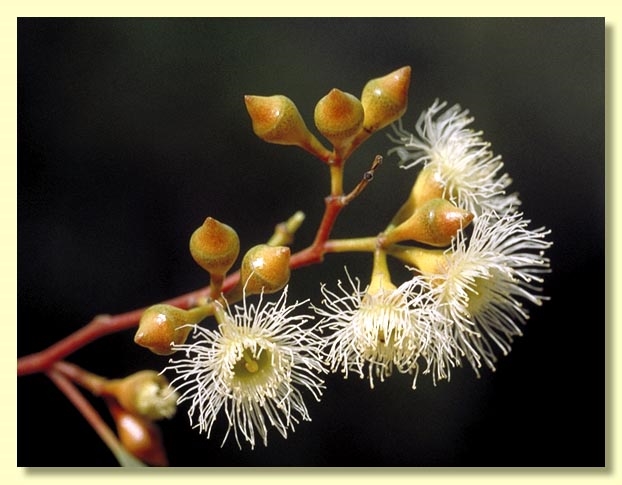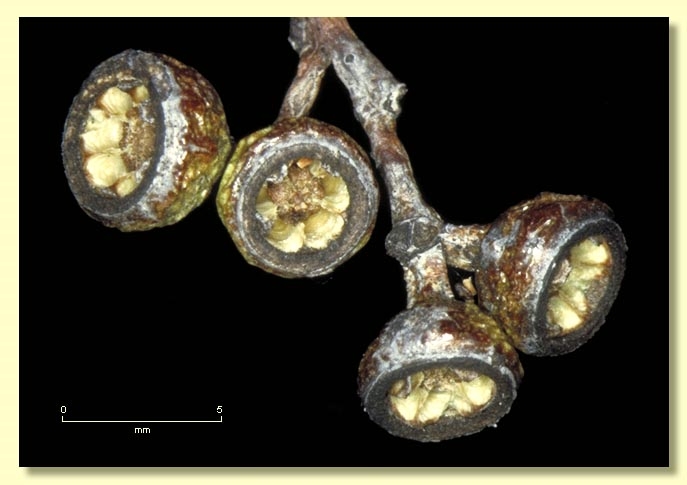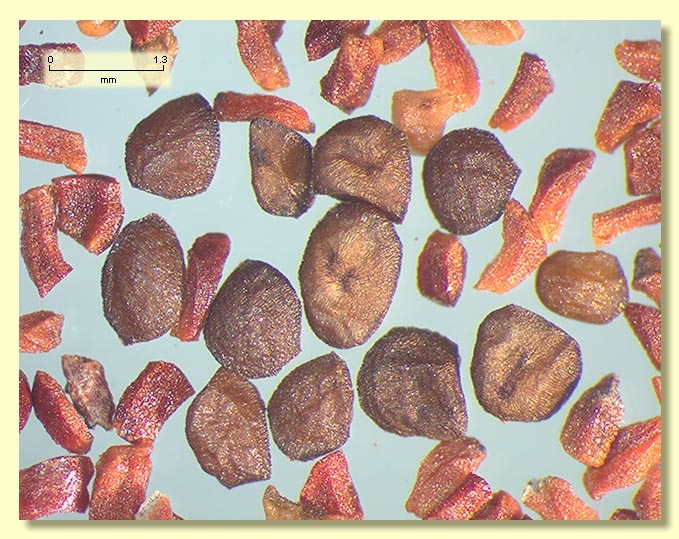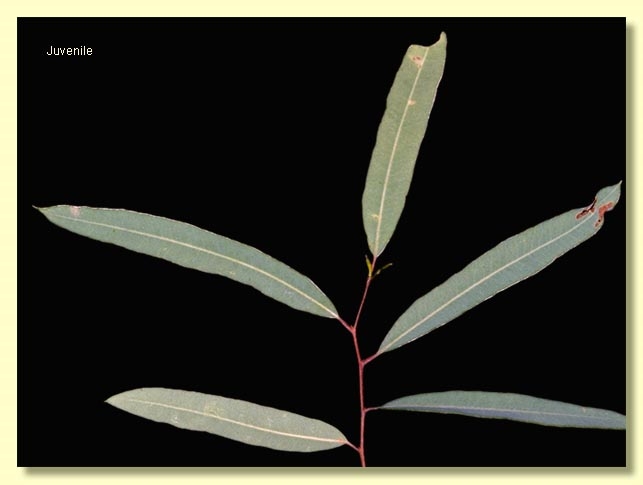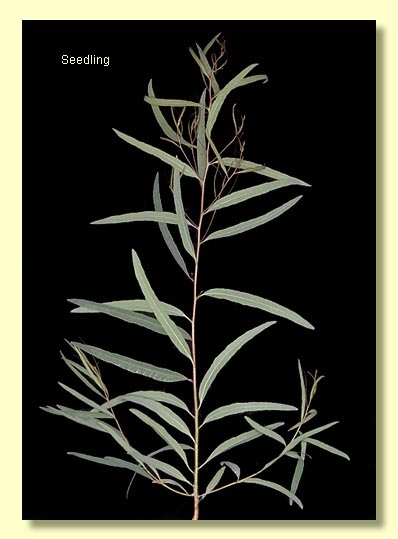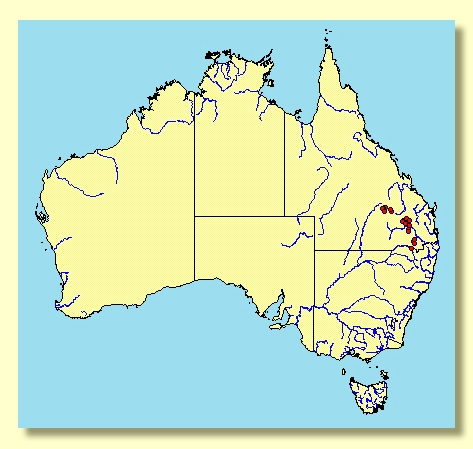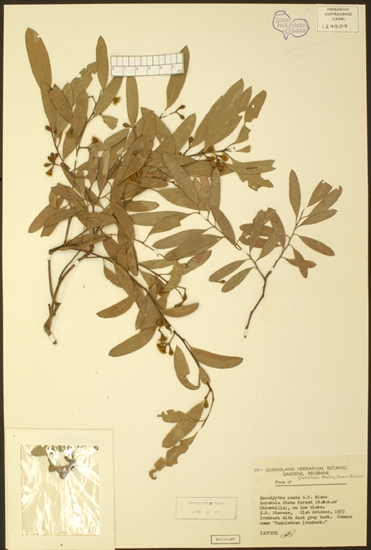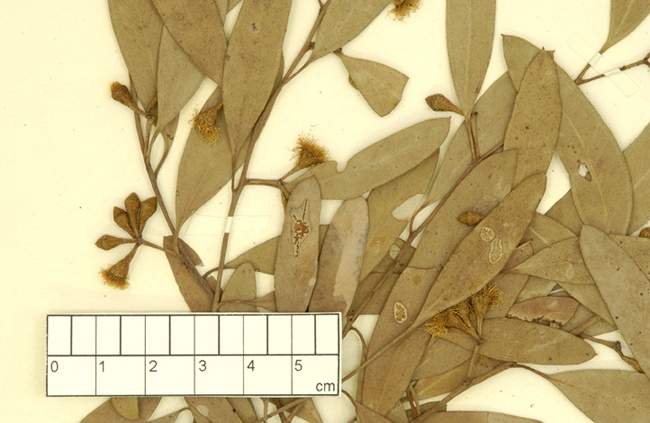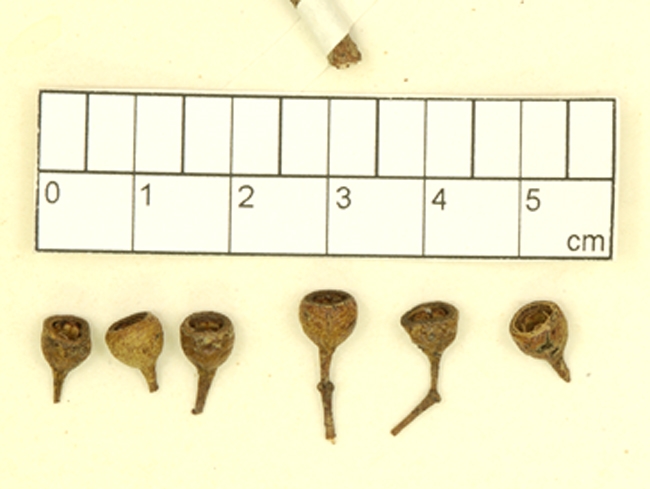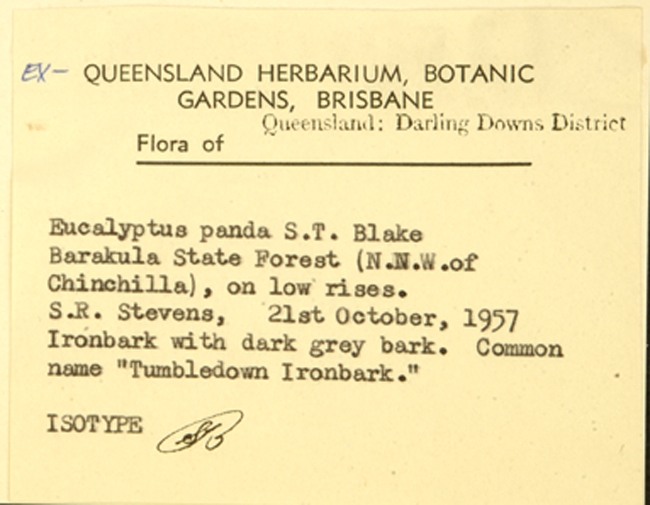Euclid - Online edition
Eucalyptus panda
Eucalyptus | Symphyomyrtus | Adnataria | Terminales | Rhodoxylon | Concolores
Ironbark to the small branches, grey or black, moderately hard.
Juvenile growth (coppice or field seedlings to 50 cm): stem square or rounded in cross-section; juvenile leaves always petiolate, opposite for 4–6 nodes then alternate, lanceolate to narrowly lanceolate, 5–9 cm long, 1–1.5 cm wide, dull, green to grey-green.
Adult leaves alternate, petiole 1–2 cm long; blade linear to lanceolate, 5–11 cm long, 0.8–2.2 cm wide, base tapering to petiole, concolorous, dull, green to grey-green, side-veins greater than 45° to midrib, moderately to densely reticulate, intramarginal vein parallel to and remote from margin, oil glands intersectional or obscure.
Inflorescence terminal compound and sometimes axillary unbranched also, peduncles 0.2–0.8 cm long, buds 7 per umbel, pedicels 0.1–0.4 cm long. Mature buds ovoid to diamond-shaped, 0.4–0.7 cm long, 0.3–0.4 cm wide, green to yellow, sometimes slightly ribbed, scar present, operculum conical to beaked, stamens inflexed, with outer staminodes, anthers adnate, positioned obliquely at filament tip, cuboid, dehiscing by terminal pores, style long, stigma pin-head shaped or blunt, locules 3 or 4, the placentae each with 4 vertical ovule rows. Flowers white.
Fruit on pedicels 0.1–0.6 cm long, broadly cupular or hemispherical, 0.4–0.6 cm long, 0.5–0.7 cm wide, disc descending, valves 3, 4 or 5, slightly exserted to just below rim level.
Seeds brown, 0.5–1.5 mm long, flattened-ovoid, dorsal surface smooth or shallowly pitted, hilum ventral.
Cultivated seedlings (measured at ca node 10): cotyledons reniform to oblong; stems square to rounded in cross-section; leaves always petiolate, opposite for 4–6 nodes then alternate, narrowly lanceolate to linear, 5–11 cm long, 0.5–1.5 cm wide, base tapering, margin entire, apex pointed, dull, green.
Flowering has been recorded in May, June, August, September and November.
Small to medium-sized ironbark tree occurring from the area just south of the Carnarvon National Park through the Injune – Robinson Gorge area and then further south-east through the Barakula State Forest – Chinchilla – Millmerran – Inglewood – Texas areas in south-east Queensland just into far northern New South Wales near Yetman. It is characterised by its small, dull, grey-green leaves, ovoid or diamond-shaped buds, cupular or hemispherical fruit and linear to narrow lanceolate juvenile leaves.
Within its subgroup, i.e. subseries Concolores, E. panda is closest to E. beyeri, E. virens and E. sicilifolia. All four species have relatively small buds and fruit and linear to narrow lanceolate juvenile leaves. E. virens and E. sicilifolia are easily separated by having glossy green leaves (dull green to grey-green in E. panda). E. beyeri differs only slightly by having slightly smaller fruit (0.5–0.7 cm in E. panda and 0.4–0.6 cm in E. beyeri).
All the other species in subseries Concolores, i.e. E. fusiformis, E. dura, E. tetrapleura, E. suffulgens, E. melanoleuca, E. caleyi, E. ancophila and E. corynodes, have larger juvenile leaves and barrel-shaped to funnel-shaped fruit (E. panda with linear to narrow lanceolate juvenile leaves and cupular or hemispherical fruit). E. ancophila, E. dura, E. suffulgens and E. melanoleuca can be further separated by having glossy green adult leaves. E. tetrapleura differs further by having four-sided fruit.
All the species in the subseries Discolores, i.e. E. paniculata, E. decolor, E. placita and E. sp. Dorsiventralis, differ by having distinctly discolorous adult leaves (E. panda with concolorous adult leaves). E. sp. Dorsiventralis differs further by having four-sided fruit.
Within its area of occurrence there are other ironbarks which may be confused with E. panda. They are E. beaniana, E. crebra, E. decorticans, E. fibrosa subsp. nubila, E. melanophloia, E. rhombica and E. tholiformis, all of which differ in having buds with stamens all fertile and irregularly flexed.
Eucalyptus sideroxylon differs by having buds that hold the outer operculum into maturity and both the inner and outer operculum shed together at anthesis (no operculum scar).

